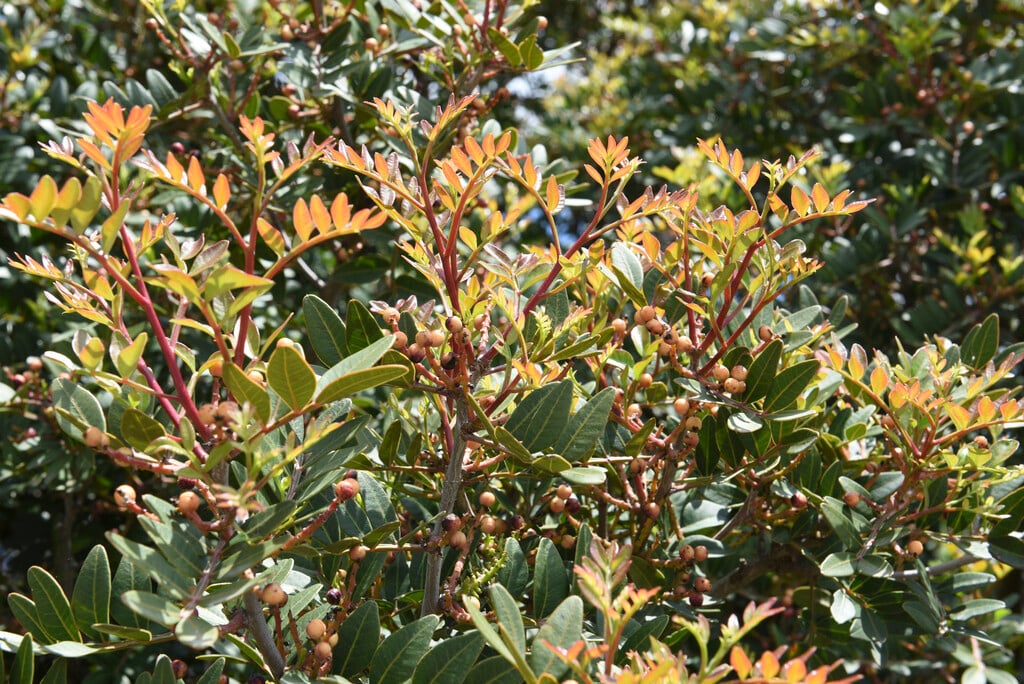Pistacia lentiscus
mastic tree
A tender evergreen shrub or small tree, up to 3m high, with pinnate, aromatic, leathery green leaves divided into up to 7 pairs of leaflets. Small flowers are produced in late spring and early summer; on male plants these are reddish and held in small dense clusters, female plants have looser clusters of brownish green flowers. If pollinated, these are followed on by small round reddish fruits that ripen to black
Size
Ultimate height
2.5–4 metresTime to ultimate height
5–10 yearsUltimate spread
2.5–4 metresGrowing conditions
Moisture
Well–drainedpH
Acid, Alkaline, NeutralColour & scent
| Stem | Flower | Foliage | Fruit | |
| Spring | Green Red | Green | ||
|---|---|---|---|---|
| Summer | Green | |||
| Autumn | Green | Red Black | ||
| Winter | Green |
Position
- Full sun
Aspect
South–facing or West–facing
Exposure
ShelteredDrought resistance
Yes Hardiness
H2Botanical details
- Family
- Anacardiaceae
- Native to GB / Ireland
- No
- Foliage
- Evergreen
- Habit
- Bushy
- Genus
A genus of 10 to 20 species of flowering shrubs and small trees in the cashew family, the most well known being pistachio which is grown for its edible seeds
- Name status
Correct
- Plant range
- Mediterranean
How to grow
Cultivation
In mild, frost-free areas, may be grown outdoors in moderately fertile, sharply drained soil in a sunny, sheltered spot; plants may need winter protection. In colder areas, grow under glass or in containers that can be moved indoors over winter, in a peat-free, loam-based potting compost with added sharp sand, in full light. Sap of this plant is used to produce mastic
Propagation
Propagate by seed or by softwood cuttings in late spring or early summer
Suggested planting locations and garden types
- Coastal
- Mediterranean climate plants
- Conservatory and greenhouse
Pruning
Pruning group 1; restrictive pruning may be required if grown under glass
Pests
Generally pest-free
Diseases
May be susceptible to fungal root rot
Get involved
The Royal Horticultural Society is the UK’s leading gardening charity. We aim to enrich everyone’s life through plants, and make the UK a greener and more beautiful place.
